If you’ve ever spent a night in a tent, you know that moment when the quiet of the wilderness feels both peaceful and slightly unnerving. You might start wondering if you’re alone or if curious wildlife may be attracted to your campsite. While you may think it’s only your food that draws them in, there are plenty of surprising things that can bring wild animals sniffing around your temporary abode. Let’s look at some unexpected factors that might be inviting more than just fresh air into your tent.
1. The Scent Of Your Soap
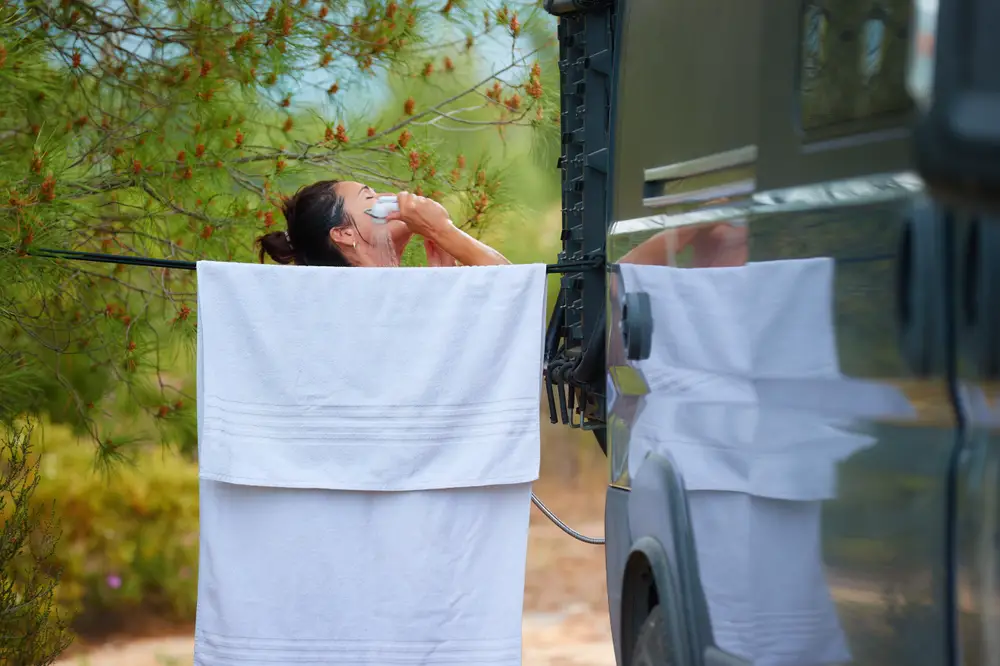
You might think of your soap as a tool for cleanliness, but to wild animals, your sweet-smelling soap can be an invitation. Many soaps carry floral or fruity scents that mimic natural food sources for animals. According to the National Wildlife Research Center, fragrances from personal hygiene products can be particularly intriguing to animals who rely heavily on their sense of smell. When camping, consider using unscented or wildlife-safe soap to reduce the chances of attracting unwanted visitors. While it’s pleasant to emerge from the woods smelling like a meadow, remember that you’re not the only one who enjoys those scents.
After all, wild animals don’t have grocery stores; their noses guide them to food sources. Even a mildly scented soap can spark the curiosity of animals ranging from small rodents to larger mammals. Animals are naturally inquisitive, and your fragrant body wash or shampoo could be the most exotic thing they’ve smelled in a while. If you’re camping in an area with a significant wildlife presence, it’s wise to stash any scented items away from your sleeping area. Sealed plastic bags or bear-proof containers are a good bet for storing these items.
2. Brightly Colored Gear
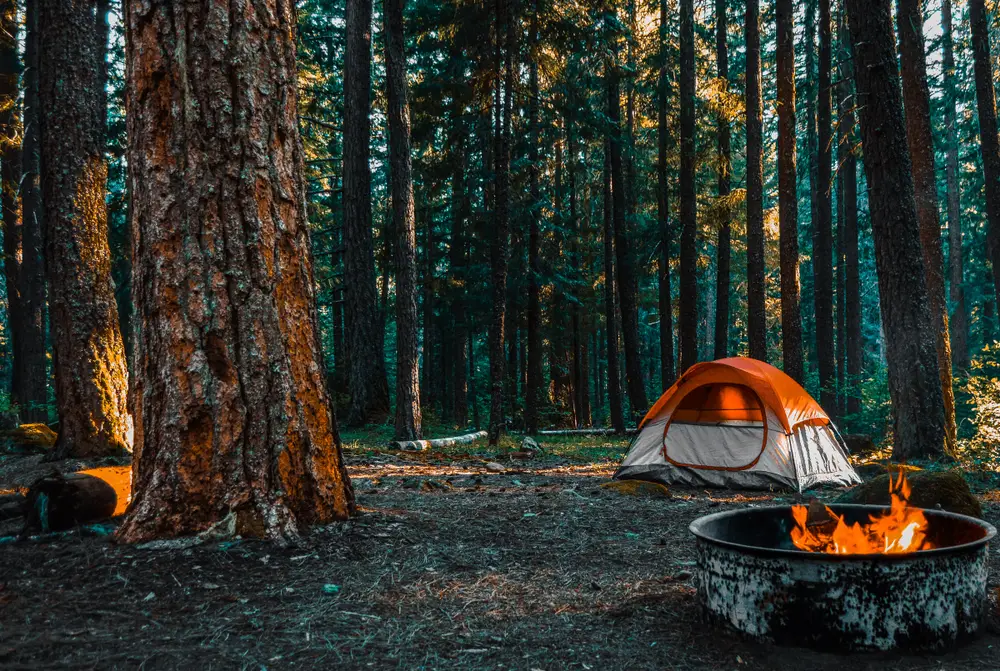
Your bright red tent and neon green camping gear may look stylish, but they can catch the eye of curious critters. Animals in the wild are often attracted to the unusual, and vivid colors can stand out against the natural greens and browns of the wilderness. While most animals rely more on scent than sight, those that do notice colors might find your gear intriguing. This is especially true for birds, some of which are drawn to bright colors and may swoop in for a closer look.
While a curious bird might not pose much of a threat, other animals could be lured in by the promise of something interesting. Brightly colored items can signal potential food sources or nesting materials to wildlife. If your gear is particularly eye-catching, consider covering it up with more neutral tones while you’re not using it. This simple step can help you blend into the environment and avoid drawing unnecessary attention to your campsite.
3. Campfire Remnants
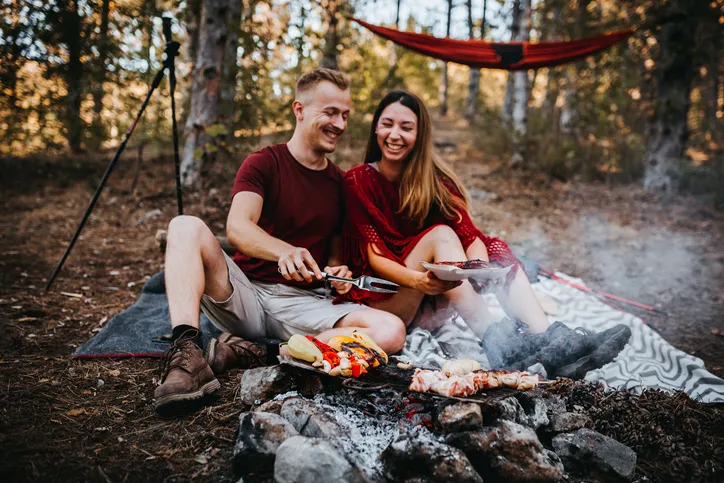
You might enjoy the smell of a campfire, but you’re not alone. Campfire remnants can attract wildlife long after the flames have died down. A study conducted by the Forest Ecology Institute showed that the scent of charred wood and leftover food particles can be a magnet for scavenging animals. These animals are often drawn to the lingering odors of burned food bits and ash, hoping to find a morsel or two. It’s a good reminder to properly extinguish fires and clean the area thoroughly before heading to bed.
Animals such as raccoons, bears, and even birds can quickly learn that campfires often lead to easy food opportunities. When you leave your fire unattended or fail to properly clean up, you could be inviting these creatures to explore your campsite. Fires also leave behind greasy residues that can be just as attractive as the food itself. Properly managing your fire and its remains can help keep wildlife at a safe distance. Consider using a portable stove for cooking, and keep fires designated to recreational use only.
4. Your Tent’s Location
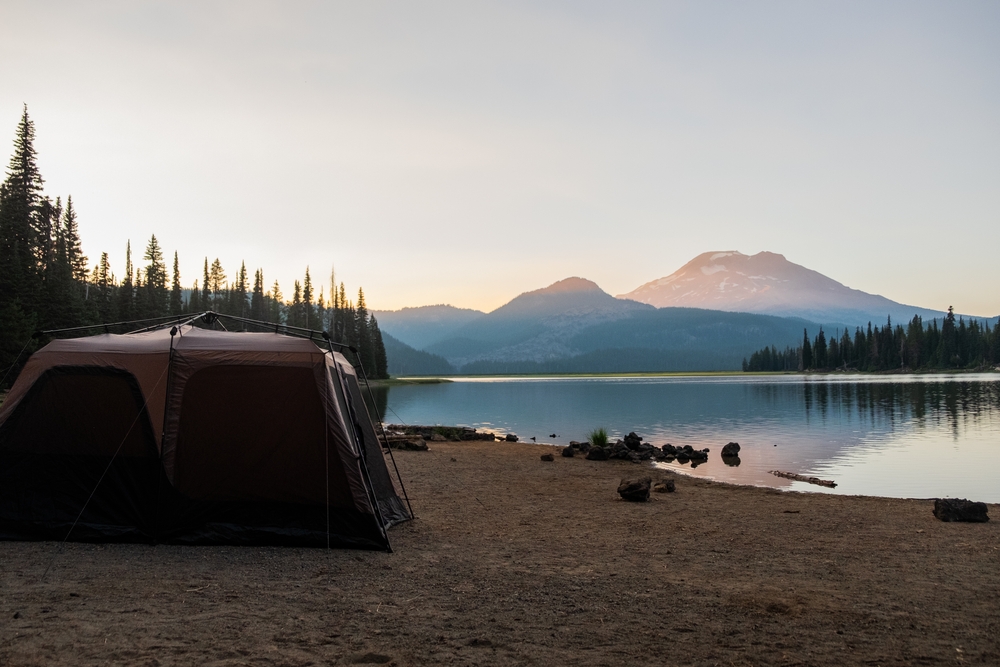
Where you pitch your tent can play a huge role in whether or not you get any unexpected visitors. Setting up camp too close to water sources or animal trails is like hanging a “Welcome” sign for wildlife. Areas near water are particularly attractive since they serve as natural highways for animals seeking hydration and food. Animal tracks or droppings in the area can be clear indicators that you should consider a different spot. By being mindful of your surroundings, you can reduce the risk of attracting wildlife to your tent.
Moreover, animals are creatures of habit, often following the same paths daily. If you set up your tent in a spot that intersects with these pathways, you’re more likely to encounter wildlife. Always survey your surroundings for any signs of animal activity before setting up camp. This could include looking for worn paths, cleared vegetation, or even scat. A little extra caution in choosing your tent site can make a significant difference in your camping experience.
5. The Sound Of Music

Playing your favorite tunes around the campsite can be a great way to relax, but it might also attract a curious audience. Birds and other animals are naturally curious about new sounds, especially those that mimic natural calls. Animal behaviorist Dr. Sarah Thompson notes in her research published in the Journal of Wildlife Management that certain frequencies and rhythms can pique the interest of wildlife. While a low-playing radio might not lead to an animal jam session, it can certainly bring a few curious critters closer. Consider keeping the volume down to enjoy the peace of nature without drawing too much attention.
Animals have different auditory ranges, and what sounds pleasant to you might sound like a dinner bell to them. It’s fascinating to think that your playlist could be interpreted as a bird call or other natural sound. While this doesn’t mean you have to give up your music entirely, being aware of the potential effects is essential. Opt for a pair of headphones if you want to enjoy music without potentially luring wildlife to your campsite. This way, you can soak in your favorite tunes while still respecting the local fauna.
6. Shiny Objects

Shiny things have a way of catching the eye, and humans aren’t the only ones who find them fascinating. Animals, particularly birds, are known to be attracted to shiny or reflective objects. This attraction could be due to their natural affinity for water or their instinct to use shiny items in nesting. If you’ve got shiny cooking utensils or gear, you might inadvertently attract some unwanted guests. Keeping these items packed away or using dull-colored alternatives can help minimize the risk.
Reflections from shiny objects can also mimic the glint of water, luring animals closer under the assumption it’s a part of their habitat. This is especially true for animals that rely on water, leading them to investigate your campsite further. Even small critters like squirrels are known to take a liking to shiny things, often running off with them if given a chance. To avoid losing your gear or attracting too much attention, store shiny items in less visible spots. A little bit of forethought can keep your campsite less appealing to curious wildlife.
7. Sweat And Human Scent

You might not think of yourself as a source of attraction, but your scent can be quite compelling to wildlife. According to a study led by Dr. Mark Johnson, animals can be drawn to the salt and minerals found in human sweat. After a long day of hiking, your clothes and gear might carry more than just memories of the trail; they could also carry scents that attract animals. This is especially true in areas where wildlife has become accustomed to human presence and associates it with food.
While you can’t avoid sweating, you can take steps to manage the scent you leave behind. Washing your clothes and storing dirty laundry in sealed bags can help minimize the allure. It’s also a good idea to keep your tent’s entryway clear of any items that might carry strong human odors. By keeping your personal scent under control, you can reduce the interest of nearby animals in your campsite. This not only protects your gear but also helps maintain a safe distance between you and the local wildlife.
8. Food Packaging

Even if you’re diligent about keeping your food secured, the packaging alone can be enticing to animals. The aroma from food wrappers or containers can linger long after the food is gone, drawing wildlife in for a closer look. It’s essential to dispose of or securely store all food packaging to avoid attracting curious critters. Animals have keen noses and are experts at finding even the smallest morsels of food left behind. Avoid leaving any trace of food packaging around your campsite to prevent unexpected visitors.
Many animals have learned to associate human campsites with easy meals, often scavenging for scraps. In fact, the rustling of a plastic wrapper could easily be mistaken for the sound of prey. To minimize this risk, consider using reusable containers for your food that don’t hold onto odors as disposable packaging does. This practice not only reduces waste but also keeps animals from associating your campsite with food sources. Taking these precautions can significantly lessen the likelihood of wildlife encounters.
9. Cooking Smells
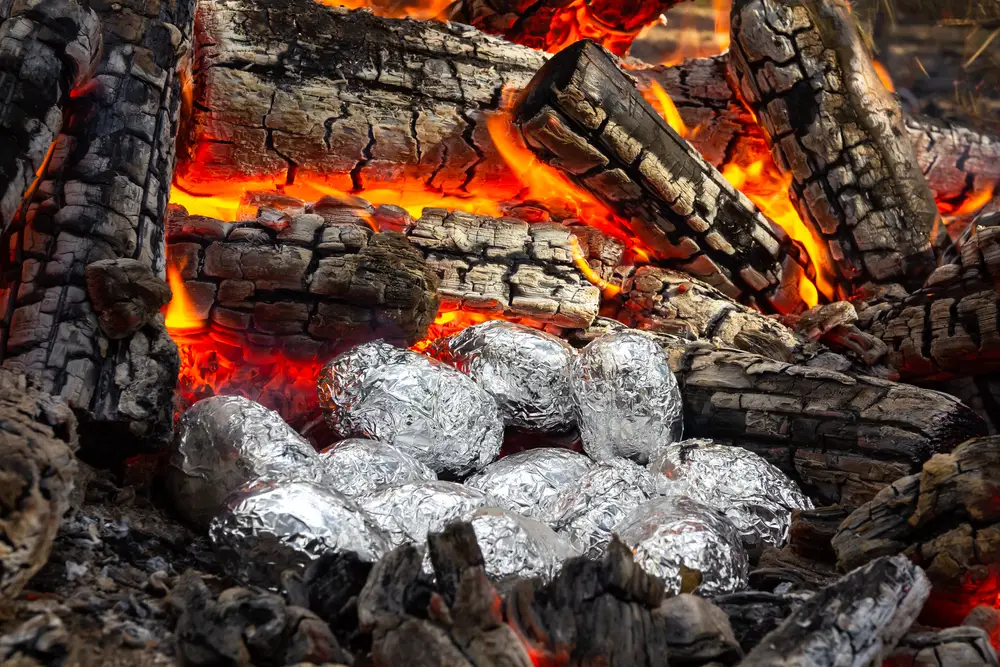
The tantalizing aroma of your dinner simmering over the campfire can be a beacon to nearby animals. While it might be comforting to you, it could signal an opportunity to wildlife. Animals rely heavily on their sense of smell for survival, and cooking odors can travel quite a distance. If you’re in an area populated by large wildlife, such as bears, this can be particularly concerning. Keeping your cooking area away from your sleeping area can help mitigate this issue.
It’s not just the smell of dinner that can attract wildlife; the residual scents left on your cooking gear can be equally enticing. Be diligent about cleaning your pots, pans, and utensils immediately after use. Store them in sealed containers or bags to prevent leftover smells from tempting animals. Additionally, consider preparing meals that produce less odor when cooking in areas known for active wildlife. This approach can help you enjoy your meal without putting yourself at risk.
10. Pet Food

Bringing pets along on a camping trip can be a rewarding experience, but their food might attract more than just your four-legged friend. Pet food often contains strong scents that can lure in wildlife looking for an easy meal. To prevent this, keep your pet’s food sealed in airtight containers when not in use. Feeding pets away from your tent and ensuring all remnants are cleaned up can also help deter curious animals. Remember, what’s a treat for your pet could be a midnight snack for a raccoon or worse.
Animals can be incredibly resourceful when it comes to finding food, and pet food left out is a big draw. Sealing it tightly and storing it in a secure location is key to keeping your campsite safe. Even a small amount of kibble can be enough to entice wildlife to investigate your campsite. Be mindful of where and when you feed your pet, always supervising meal times. This way, you can enjoy your camping experience without unintended guests joining the party.
11. Fruit And Vegetables
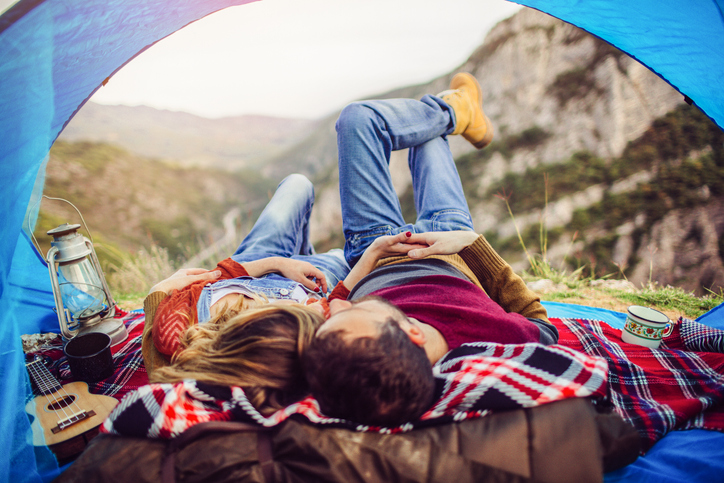
Fresh produce is a great way to maintain healthy eating habits while camping, but it can also be a magnet for wildlife. Fruits and vegetables emit natural sugars and scents that animals find appealing. Keeping these foods secure when not being consumed is essential to prevent drawing in hungry critters. Sealing fruits and veggies in airtight containers and storing them away from your tent can help reduce the risk. Cleaning up any scraps or peels immediately after eating is equally important to avoid attracting attention.
The scent of ripe fruit can carry for quite a distance, especially in a still forest. Animals have an incredible sense of smell and can detect these scents even when they’re faint. Even if you’re careful about storing your food, it’s crucial to manage how you dispose of food waste. Double-bagging trash and storing it in a bear-proof container can further protect your campsite from visitors. Protecting your produce and its waste is a small but vital step in keeping wildlife at bay.
12. Human Waste
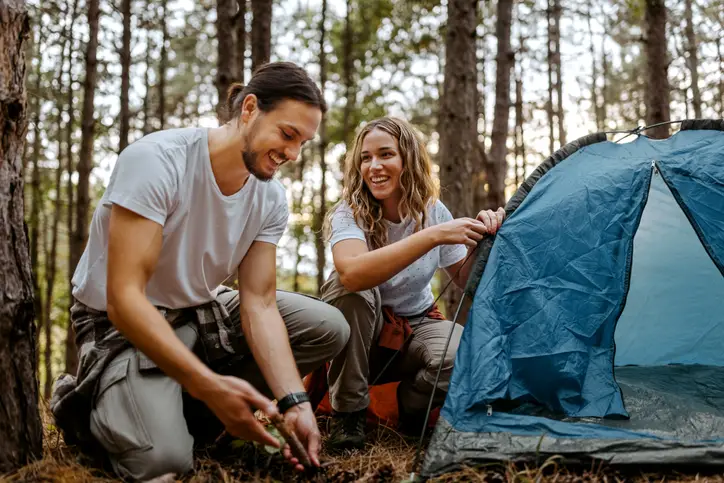
While it might not be the most pleasant topic, managing human waste is crucial when camping. Improper disposal can attract wildlife due to the human scent and the nutrients it contains. Using designated bathroom facilities or a portable toilet system can help minimize impact and reduce attraction. If neither is available, follow Leave No Trace principles by digging a small hole at least 200 feet from your campsite and water sources to bury waste. This practice not only protects you but also maintains the natural ecosystem.
Animals can be drawn to the nitrogen content found in human waste, which is why proper disposal is so important. Failing to manage this can lead to animals exploring your campsite, looking for more. This is particularly true for larger wildlife, which can pose significant dangers if attracted. By ensuring that all human waste is kept away from your sleeping and eating areas, you can avoid drawing animals in. This simple step ensures a safer and more pleasant camping experience for everyone involved.
13. Trash Left Behind
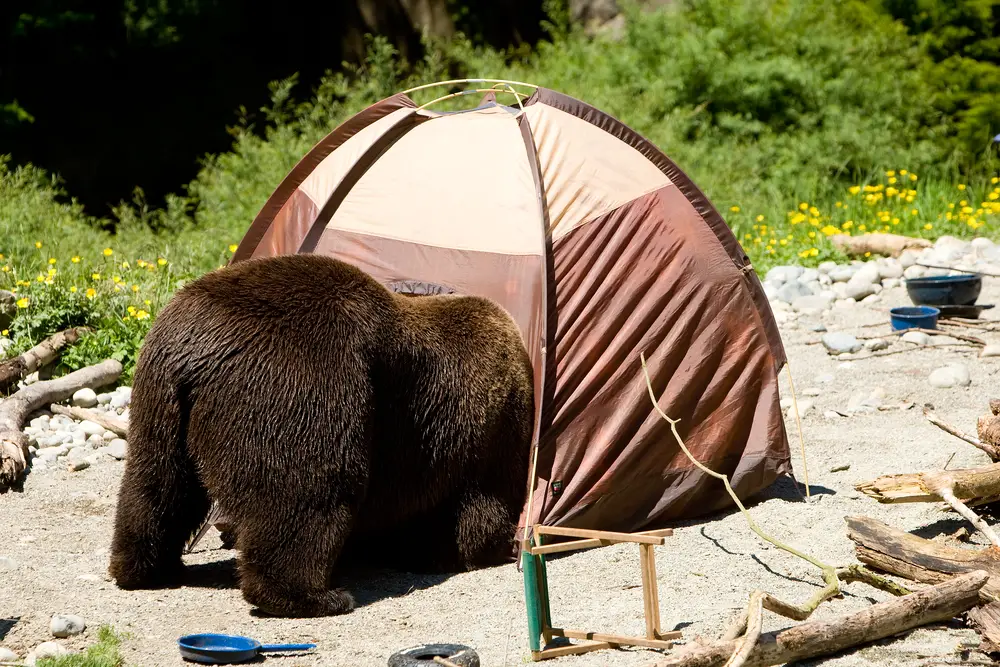
Leaving trash around your campsite is an open invitation for wildlife to come and check it out. Even small amounts of garbage can attract animals looking for a meal. To avoid this, be diligent about collecting and storing trash in bear-proof containers or hanging it from a tree away from your tent. Leaving no trace is not just a motto; it’s a necessity in preserving the wild spaces we enjoy. This helps ensure that you’re not unintentionally inviting wildlife into your living space.
Trash often contains food residues and other scents that can lure animals from afar. Even non-food items can be interesting to certain animals, leading them to explore further. By managing your waste effectively, you can significantly reduce the chances of wildlife encounters. Make sure to pack out all your trash when you leave to maintain the natural beauty of the area. Keeping your campsite clean and free of waste is one of the easiest ways to prevent unwanted animal interactions.
14. Unattended Gear
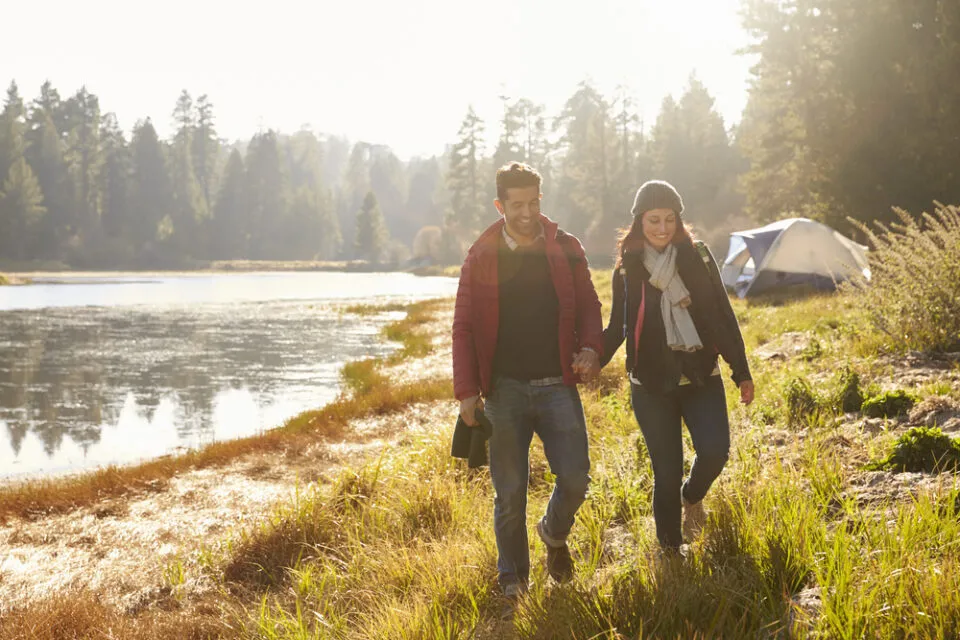
Leaving your gear unattended might seem harmless, but it can be an open invitation for animals to investigate. Curious wildlife might be intrigued by the unfamiliar objects within their territory. Whether it’s your backpack, cooler, or sleeping bag, consider storing them securely when not in use. This not only protects your gear but also minimizes the risk of drawing animals into your campsite. Remember, what might seem mundane to you could be a novelty to the local wildlife.
Animals explore their environment using their senses, and new objects are often worth investigating. If your gear contains any scents—whether from food, toiletries, or something else—it might become a target. By securing your belongings, you reduce the likelihood of them being tampered with or damaged by curious critters. Consider using secure storage options like bear lockers or hanging your gear out of reach when possible. Taking these precautions helps ensure your camping trip remains focused on enjoying nature rather than dealing with wildlife issues.
